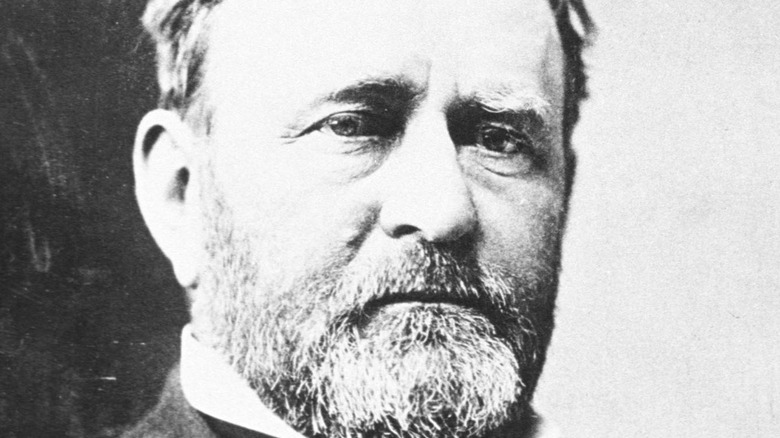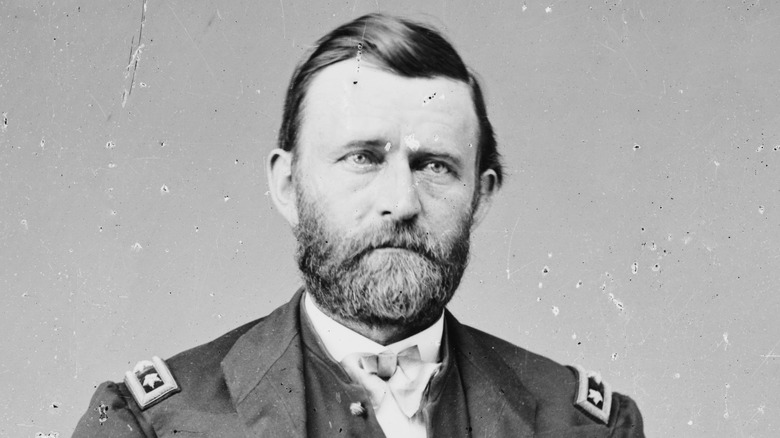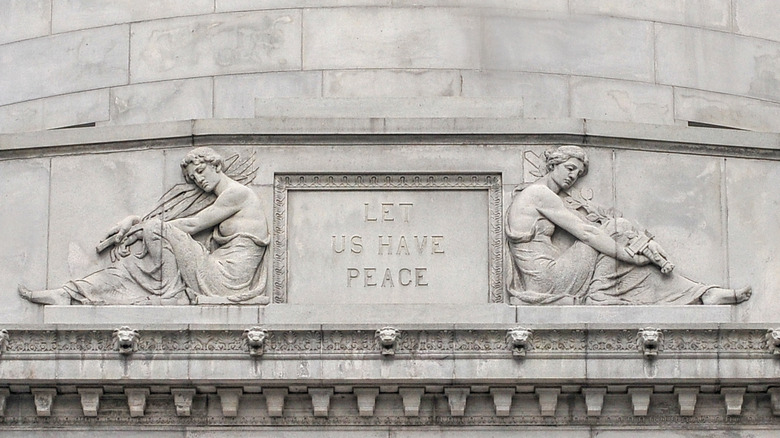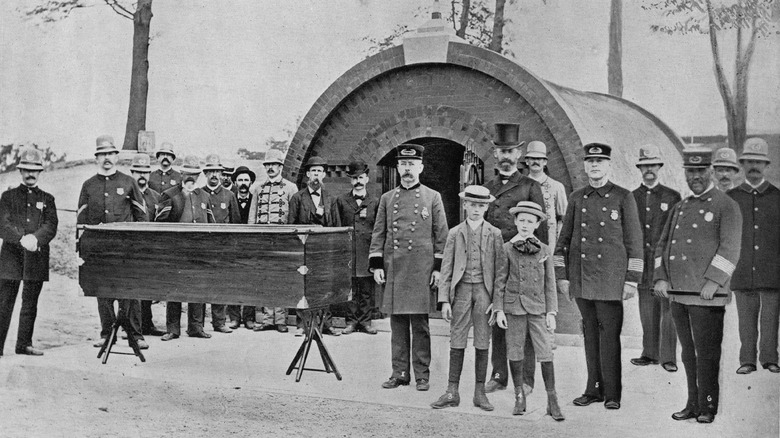The Completely Unexpected Pallbearers At Ulysses S. Grant's Funeral
Ulysses S. Grant began his military career in the Mexican American war (via History) but truly came to national prominence commanding the Union Army during the American Civil War. He began the Civil War as a colonel but quickly rose through the ranks and, in March of 1864, he was promoted to Lieutenant General and became the leader of all U.S. armies (via History). Grant would go on to lead the Union to victory over the Confederacy in the Civil War.
In 1868, four years after the war, and with his name now well known throughout the U.S., Grant was elected president. According to History, he received over 52% of the popular vote, and at 46 years old, was the youngest president up to then. He would win re-election in 1872 and serve a second term. Nevertheless, Grant's career is largely defined by his critical role for the Union in the Civil War, so the choice for his pallbearers, following his death in 1885, was surprising.
A national hero
Grant's actions in the Civil War had earned him status as a national hero that, despite a shaky presidency, lasted until he died at the age of 63 in 1885 (via History). The whole country went into mourning following Grant's death. On August 8, 1885, Grant's funeral procession was held in New York City, attended by 1.5 million people (via National Park Service). According to PBS, the processional line behind Grant spanned seven miles and included President Grover Cleveland as well as the two living former presidents, Rutherford B. Hayes and Chester A. Arthur.
President Cleveland appointed the pallbearers for Grant's funeral. He selected William Tecumseh Sherman and Philip Sheridan, both Union generals during the Civil War, as well as Simon Bolivar Buckner and Joseph Johnston, two generals who had fought for the Confederacy (via PBS). The reasoning for Sherman and Sheridan is clear, as both men had served and fought under Grant's command. Buckner and Johnston had both fought against Grant and the Union. Their choice is less obvious.
Why Confederate generals?
Ulysses S. Grant wanted peace for the country, and his tomb bears the phrase, "Let us have peace," which was also the slogan he used when running for president in 1868 (via National Park Service). So it should really come as no surprise that Grant wanted this sentiment expressed at his funeral. According to the Foreign Policy Research Institute, Grant requested an equal number of Union and Confederate pallbearers at his funeral, echoing his longing for unity.
Simon Bolivar Buckner was actually friends with Grant, so it makes sense that he would be a pallbearer at Grant's funeral. American History Central reports that Grant went to Buckner before the war when he was struggling financially, and Buckner arranged a place for him to stay until he got back on his feet. Their friendship was tested during the war, and when Grant seized the town of Paducah, Kentucky, Buckner accepted the task of becoming brigadier general for the Confederates in 1861. In the end, Buckner surrendered to Grant on February 16, 1862 (via Britannica). As far as Joseph Johnston, it seems Grant had a certain amount of respect for him. The Baltimore Sun reports that William Tecumseh Sherman wrote in his memoirs that Grant told him that Johnston was "about the only general on that side that he feared."
Unity
The whole funeral procession was an attempt to honor a man who had the legacy of defeating the Confederacy and preserving the United States as a union. With this in mind, President Cleveland promoted the theme of unity for the funeral (via National Park Service). The choice of both Union and Confederate generals as pallbearers highlight this theme of unity. Just 20 years earlier these same men would have been leading armies against each other; now they were all in New York together and all serving as pallbearers for one of the men most responsible for ending that conflict.
According to the National Park Service, the day of the funeral was described as "a final, triumphant end to the national drama begun by the Civil War, as well as a day to praise Grant's role in preserving the Union." Bringing together leaders from both sides of the conflict showed that they were now all united. According to PBS, on top of the generals selected to be pallbearers, offices from both the Union and the Confederacy rode together in carriages during the procession. This grand display of unity was a great way to honor Grant, and once again thank him for his service toward reuniting the country.



